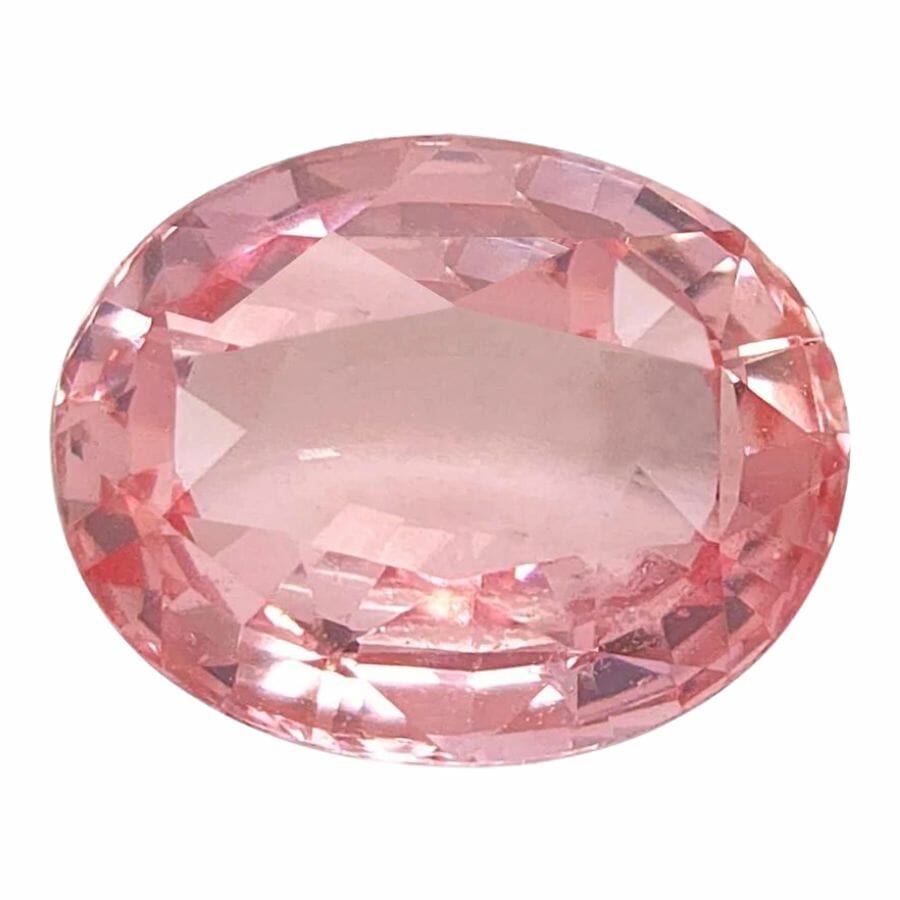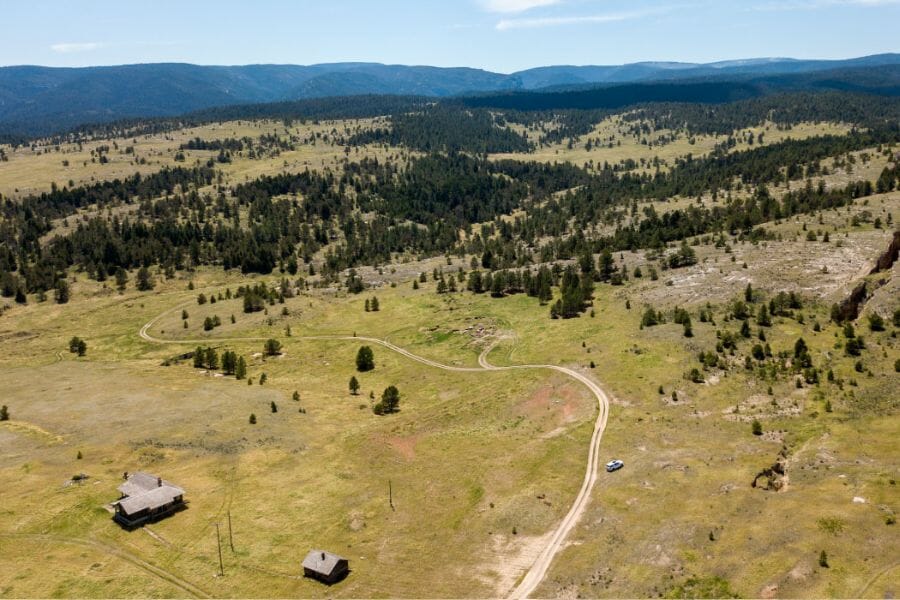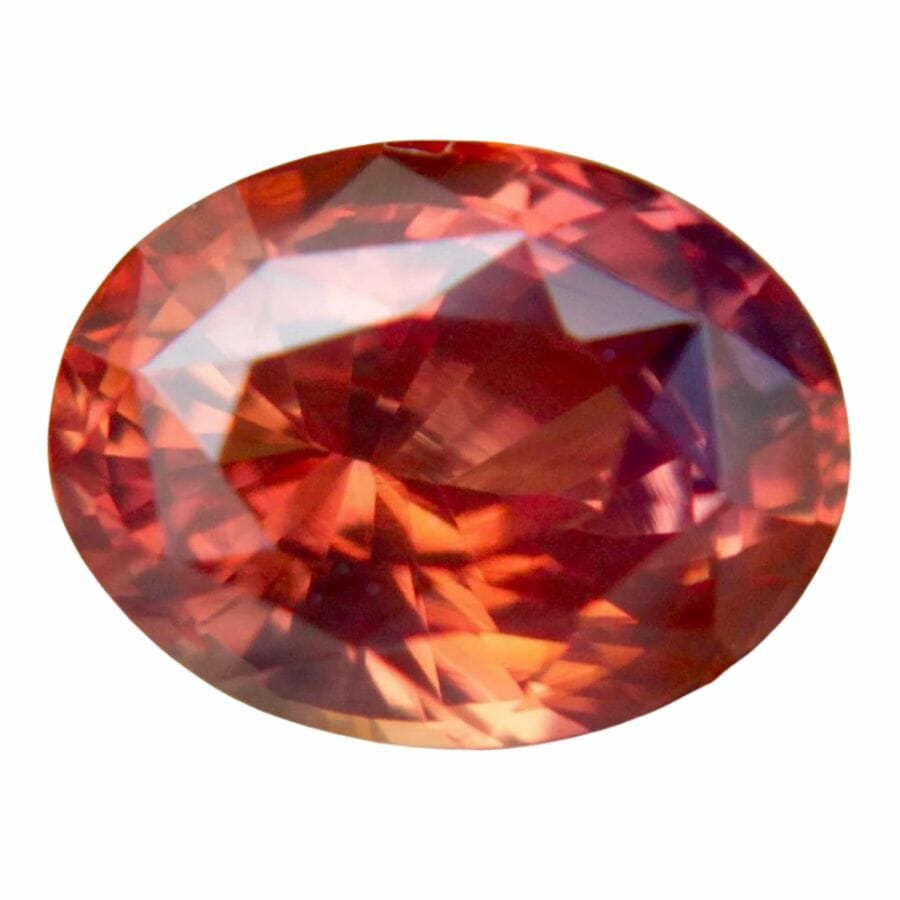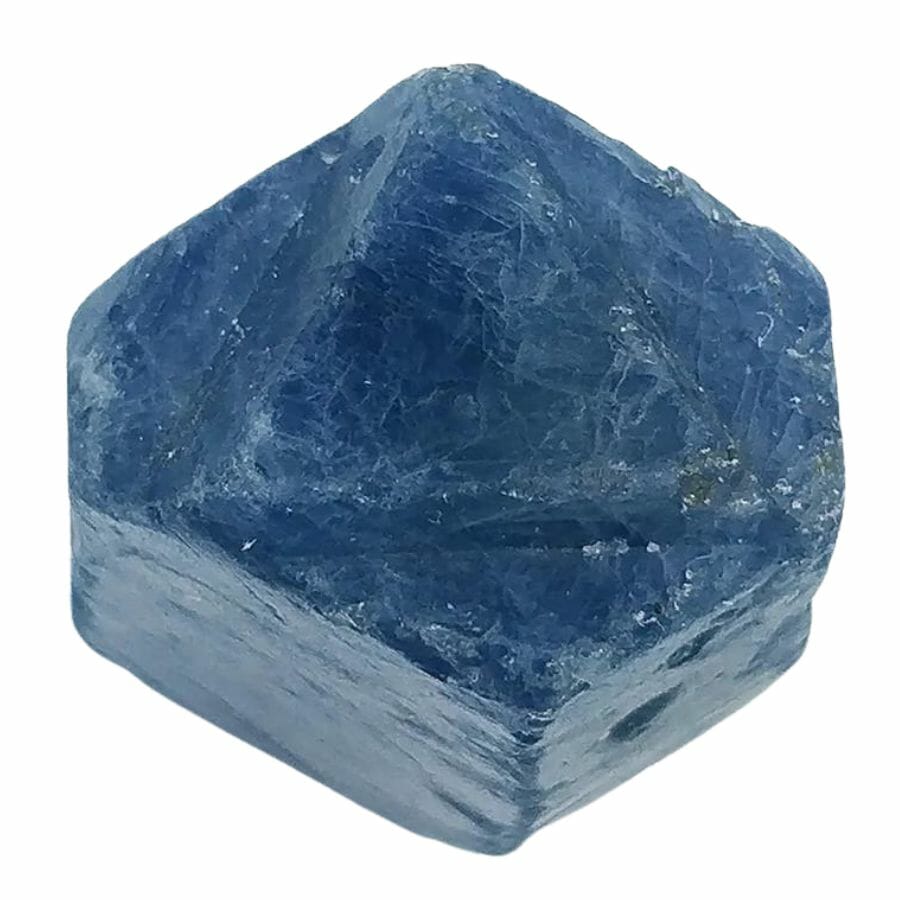Sapphire, a gem cherished for its brilliant hues and durability, is one of the hardest minerals on Earth. Renowned across various cultures for its beauty and significance, this gemstone primarily hails from regions in Asia, Australia, and North America.
While the market is saturated with both genuine and imitation stones, knowing how to identify sapphire is an essential skill for enthusiasts and collectors.
Searching for sapphires is an adventure, especially if you want to look for it in the wild. Understanding sapphire’s origin, examining its characteristics, and recognizing its unique features can ensure one’s collection is both authentic and valuable.
What sapphire is
Sapphire is mostly known for its beautiful blue color, but it can also come in pink, green, yellow, and other shades. This awesome gem is formed deep within the Earth when a mineral called corundum meets with some other elements.
Over time, heat and pressure work together to create this stunning stone.
The United States has some great spots to find sapphires! Montana is a top place where lots of these gems are hiding. So, if you ever feel like going on a gem hunt, you might want to check out Montana.
The different types of sapphire
Sapphire is such a standout gemstone, and there’s so much more to it than meets the eye! While many people know about its classic blue shade, it comes in a rainbow of other colors too. Each type has its own special charm and story.
Blue Sapphire

Blue sapphire stands out as the most popular and loved shade of this gemstone family. Its deep, vibrant blue color captures the heart and eyes of many.
What’s really cool is that the blue tint comes from tiny amounts of iron and titanium inside the stone.
While sapphires are found in many places around the world, the most famous blue sapphires often come from Sri Lanka, Myanmar, and Madagascar.
Compared to other sapphire colors, blue is more widespread and cherished, making it a top pick for jewelry and collections.
Pink Sapphire

Pink sapphire is a dazzling gem with shades that can go from a soft blush to a bold hot pink. It’s this splash of color, thanks to chromium inside it, that makes pink sapphire so special.
While sapphires come from various corners of the world, the beautiful pink ones often have homes in places like Madagascar, Myanmar, and Sri Lanka. Compared to its blue cousin, pink sapphire is a bit more rare but just as captivating.
Yellow Sapphire

Yellow sapphire shines bright with hues ranging from a gentle sunlight shade to a deeper golden yellow. The trace elements of iron inside the gem gives it this yellow hue.
While sapphires are found in many places, the most sought-after yellow ones often come from Sri Lanka and Australia.
Even though blue sapphires get a lot of attention, yellow sapphires hold their own with their cheerful and vibrant appearance.
Green Sapphire

Green sapphire is a true gem in the world of precious stones. Its unique color, ranging from a tender mint to a deep forest green, sets it apart.
These green shades are less common than other sapphire colors, making them quite special. For those hunting for these rare beauties, Australia and Thailand are popular spots to find them.
Purple Sapphire

Purple sapphire is a captivating gem with colors that dance between lovely lavender and rich violet. It’s the dash of vanadium inside that gifts this sapphire its unique purple shade.
If you’re curious about where to find these violet wonders, Sri Lanka and Madagascar are top spots on the map. Compared to the famous blues, purple sapphires are a delightful surprise, offering a royal touch to any jewelry piece.
Padparadscha Sapphire

Padparadscha sapphire is truly a standout in the gem world. Its unique pinkish-orange color reminds many of the lotus flower, which is where it gets its catchy name from.
This sapphire is extra special because of its rarity; not many gems share its sunset-like hue. If you’re hoping to find one of these beauties, Sri Lanka is the most famous spot, followed by Madagascar.
White Sapphire

White sapphire has a unique charm that sets it apart from its colorful siblings. It’s all thanks to the lack of trace elements, making these sapphires clear and sparkling.
Without any color, they offer a dazzling brilliance, often getting compared to diamonds. For those interested in where to find these transparent treasures, Sri Lanka, Madagascar, and Myanmar are the top spots.
Black Sapphire

Black sapphire is a unique twist in the sapphire family. What makes them look black is the high number of inclusions inside, making them appear deep and dark.
Even though they have this cool, mysterious look, they aren’t seen in jewelry as often as their colorful counterparts. If you’re on the hunt for these dark gems, Australia is a great place to start, followed by parts of Africa.
Star Sapphire

Star sapphire’s claim to fame is the amazing star-like pattern on its surface, known as asterism.
This cool effect comes from the way light reflects off tiny, needle-like bits of a mineral called rutile inside the gem. When light hits just right, a star appears!
Sri Lanka is a top spot for finding these starry gems, though they can also be found in places like Myanmar and Madagascar.
Parti-color Sapphire

Unlike typical sapphires that have just one shade, parti-color sapphires display two or more colors at the same time. This unique trait makes them stand out and become favorites for many gem enthusiasts.
You’ll find them in various locations worldwide, though some regions produce more of this type than others.
Where to find sapphire
The United States has some fantastic spots to discover them. Across the country, there are places just waiting for gem enthusiasts to come and explore.
Gem Mountain Sapphire Mine, Montana

Gem Mountain Sapphire Mine is a must-visit spot for gem enthusiasts. This famous location has been a hub for sapphire hunting for over a century, making it a tried and true destination.
The area is rich with sapphires that sparkle in a variety of colors, from brilliant blues to vibrant greens and everything in between. Some even find the rare pink or orange shades!
The mine offers a unique experience where visitors can search through gravel to uncover these dazzling gems.
Here is a great video going through the process at Gem Mountain and finding a bunch of sapphires!
Finding Sapphires at Gem Mountain
Yogo Gulch, Montana

Located in the heart of Big Sky Country, Yogo Gulch has earned a reputation for its outstanding sapphires.
What sets Yogo Gulch apart is the consistent quality and color of its gems. Here, you can find sapphires with a pure, deep blue hue, often compared to the finest sapphires from other parts of the world.
These gems are so special that they don’t need any heat treatment to enhance their beauty. Visitors and miners alike are drawn to Yogo Gulch in hopes of finding these prized stones.
Rock Creek, Montana

Rock Creek is famous for its abundant sapphire deposits, making it a top destination where you can find sapphire in all its glory.
The sapphires unearthed from Rock Creek display a lovely range of colors, from soft pastel blues and pinks to vibrant teals and greens.
These naturally beautiful shades make Rock Creek sapphires a favorite among gem collectors and jewelers alike. If you’re keen on finding top-quality sapphires in a variety of hues, Rock Creek is the place to be.
Cowee Valley, North Carolina

Cowee Valley is one of those fantastic places where to find sapphire in real life. This region is brimming with a bounty of beautiful sapphires, known for their unique shades ranging from translucent to deep blue.
You can also find sapphires with exciting hints of pink and violet. The thrill of discovering these gems against the backdrop of North Carolina’s scenic beauty is unmatched.
Missouri River

The Missouri River is more than just a flowing body of water; it’s a treasure trove for gem enthusiasts! This river is known for its rich deposits of beautiful sapphires.
These gems from the river’s depths sparkle in a variety of shades, from soft blues and greens to deeper, richer hues.
The river’s gravel beds hold these precious stones, making it a popular spot for gem hunters eager to discover their own sapphire treasures.
How to find sapphire
There are several ways to join in on the hunt for sapphires. Here are the different methods that can help you find these stunning gems!
Know the colors of sapphire
Gem hunting becomes easier when you’re familiar with the array of sapphire’s colors. While many folks immediately think of the classic deep blue, sapphires can surprise with a whole rainbow of hues!
If you’re planning a gem-hunting adventure, it’s a smart move to research the common sapphire colors in that specific area. This way, you can spot them more easily among other rocks and minerals.
By keeping an eye out for these various shades, you boost your chances of discovering these dazzling gems on your hunt.
Look for associated minerals
When on the hunt for sapphire, knowing the associated minerals can be a big help. In areas rich with sapphire, it’s common to find this gem alongside specific companion minerals.
These minerals provide clues about how sapphire is formed and the geological conditions of the region. For instance, discovering minerals like rutile and spinel can often mean that sapphire isn’t far behind.
By being aware of these associated minerals, you can have a better sense of where to look and what to expect. So, next time you’re in a sapphire-bearing area, remember to keep an eye out for these companion minerals.
Wash and concentrate stones
If you’re wondering how to find sapphire, one effective method washing stones. Begin by collecting a bucket full of gravel from a location known for sapphires. Next, you’ll want to give the gravel a good wash, rinsing away the mud and sand.
This process might seem simple, but there’s a neat trick to it! Remember that gemstones like sapphire are heavier than most other stones. So, as you wash the stones, sapphires will tend to settle at the bottom of your container.
By carefully removing the lighter top layer, you’ll often reveal the treasures below.
Take your time, be patient, and you might just spot the shimmering beauty of a sapphire among the remaining stones!
Examine the gravel under sunlight
When hunting for sapphires, sunlight can be your best ally! After collecting gravel from a promising location, spread it out in a spot where the sun shines brightly.
As you sift through the stones, keep an eye out for any that catch the light differently. Sapphires have a unique way of sparkling or revealing their brilliant colors when kissed by the sun’s rays.
This shimmer or color flash can make them stand out from the rest of the gravel.
How to identify sapphire once you find it
After unearthing a gem, the next step is to confirm its identity. Here are specific techniques and signs that can help determine if you’ve truly discovered a sapphire.
What sapphire looks like on the outside
Sapphires are treasures with a distinct appearance that sets them apart. Recognizing their unique external features can help in spotting them amidst other stones.
Color

While many think of sapphires as just blue, these gems can dazzle in an array of hues. The classic blue shade can range from a soft sky hue to a deep ocean blue that captures the heart.
But the color adventure doesn’t stop there. Vibrant greens, sunny yellows, enchanting purples, and soft pinks are among the delightful shades you might come across. There are even sapphires that shine in clear white or mysterious black.
Interestingly, you won’t find a sapphire in red, as red corundum proudly takes the name “ruby.”
Crystal Shape

When you’re curious about what sapphire looks like on the outside in its raw form, its crystal shape is a fascinating place to start. Sapphires, in their untouched state, often have a barrel-shaped structure that belongs to the trigonal crystal system.
This means they usually form as hexagonal prisms, which can sometimes resemble little barrels.
But nature has its way of reshaping things. As time goes on and natural processes like erosion come into play, a sapphire’s pristine hexagonal shape might get a little worn or altered.
So, while many rough sapphires showcase this distinctive form, not all will be picture-perfect hexagons. Remembering this can help when you’re out hunting for these gems in the wild!
Fluorescence

Sapphires have a captivating feature that isn’t always visible. When placed under ultraviolet (UV) light, some of these gems can glow, a phenomenon known as fluorescence.
This glowing can differ from one sapphire to another, both in its strength and in its color. The trace elements inside the sapphire can cause this cool effect.
Depending on where the gem comes from and what tiny elements are tucked inside, you might see varying shades and intensities of glow. Some might shine brightly, while others offer just a subtle hint of light.
What sapphire looks like on the inside
Sapphires are more than just their stunning exterior; their inner world is equally intriguing. Peering inside can reveal a tapestry of characteristics that tell the gem’s unique story.
Transparency

Rough sapphires offer a fascinating glimpse into the world of gemstones with their varying degrees of transparency. Just like a window can be clear or frosted, these gems can range from being completely transparent to entirely opaque.
This transparency can be a helpful clue. When a sapphire is more transparent, it often suggests that once the stone is cut and polished, the end result could be of higher quality.
On the other hand, an opaque sapphire might not shine as brilliantly when fashioned.
So, when you spot a rough sapphire, take a moment to peer into its depths; its transparency might just tell you a lot about its hidden potential!
Fracture

When you look at a raw sapphire and think about its fracture patterns, you’re diving into some interesting geology! Sapphire isn’t like other minerals that have a natural tendency to split into neat, flat layers (called cleavage).
Instead, if a sapphire were to break, it would show a conchoidal fracture. This type of breakage looks a bit like how glass shatters, with curved and rippled surfaces.
Inclusions

Inclusions are those little features that tell a story about what sapphire looks like on the inside. Inclusions in sapphires can be like fingerprints, unique to each gem.
They can be tiny crystals from other minerals, little breaks or fractures, or even small pockets or cavities. While some might see these as flaws, many gem enthusiasts appreciate inclusions because they offer clues about the stone’s origin and history.
In some cases, specific inclusions can even add to the gem’s value!


